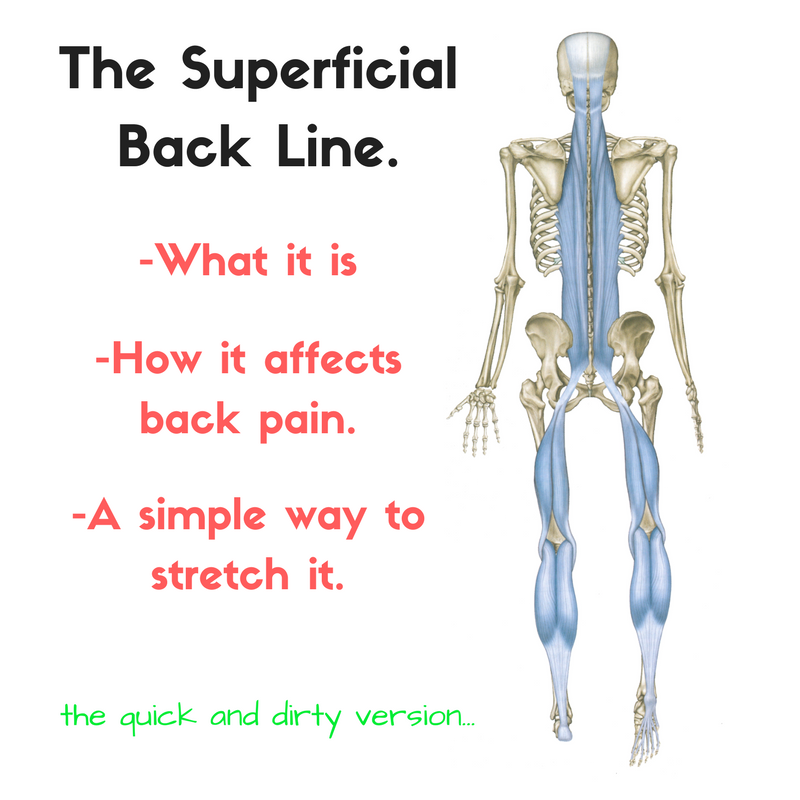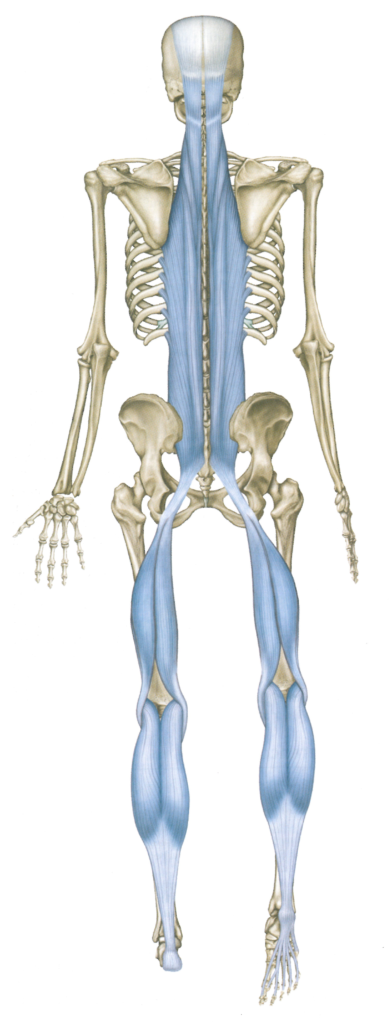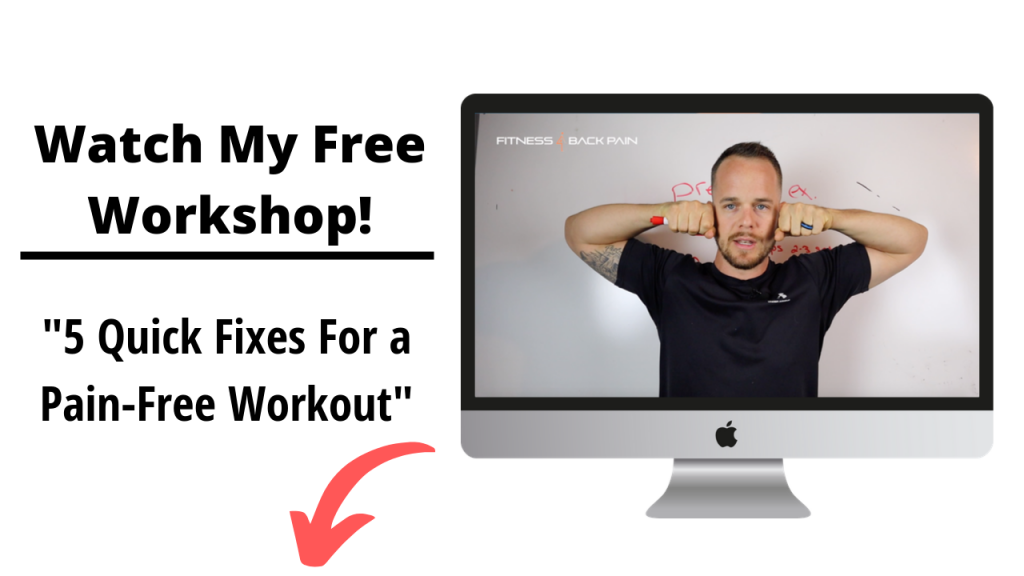
There is a myofascial connection called the Superficial Back Line (SBL) that extends from the bottom of your toes, up the back of your body, and to the top of your head. Unfortunately, when most people treat back pain, they try to break the body down into separate segments and only treat the segment that hurts. Little do most back pain (this goes for upper, middle and lower back pain) suffers know, the segment that is in pain could be caused by two segments above it. Today I want to show you WHAT your superficial back line is, why it could be causing your lower back to hurt and a simple stretch you can do to get relief.

I have said this before. When it comes to back pain (whether it’s upper, middle or lower), you have to think of the entire body as a whole. You can’t just look at the localized place where the pain is. That’s what doctors do. Doctors take x-rays and MRI’s and start pointing at defects. From here they want to “fix” the defect but what they don’t look at is the areas above and below the lower back that could be causing the strain the patient is experiencing. What I want to do today is give you an entry level look at how this “kinetic chain” idea really works. On top of that I want to give you some quick, actionable stretches and release techniques to get started with release some of the tension you may have.
What is the superficial back line (SBL) and how does it affect back pain?
The Superficial Back Line (SBL) is a network of tissue that extends from the bottom of your feet to the top of your head. The body is made up of different tracks of muscle and connective tissue that all play a roll in keeping you upright and successfully doing daily tasks. For the sake of today’s topic, I am not going to go into detail naming each individual muscle that makes up this back line simply because I want you to look at this section of tissue as one giant chain. Changing your way of thinking for a moment will allow you to really understand the impact this entire chain has on the body compared to breaking each section down.
As adults, the Superficial Back Line supports and establishes the curves of the spine from the top to bottom, along with keeping the body upright. If you look at the picture above you can see an obvious separation between these two lines going down the back of the body. This separation allows the body to move even more efficiently but also opens up opportunities to create kinetic chain nightmares if you allow imbalances to go untreated.
The goal for today is to learn some basic maintenance on your entire superficial back line. If you’re dealing with dysfunctions such as lack of dorsiflexion in your ankle, knee hyperextension, hamstring shortness and/or anterior pelvic shift you may want to pay close attention and learn to show this line some love.
To keep this simple and easy to follow I am going to give you one stretch you can do to stretch the superficial back line to bring relief to the entire chain of tissue.
Simple at home stretch to bring relief to the Superficial Back Line
Try this stretch out. If you could feel the stretch into your lower back leave a comment and let me know your experience. Did it help? Did it make your pain worse?
If it helped, be sure to share this with your friends! Someone out there is struggling and you could be the one to help them! Share it!
Stay tuned, early next week I will be posting a cool exercise you can use to help release tension in your superficial backline. Its power and will blow your mind how effective it is!
Addicted to your health,
William


To stretch the lines, do you recommend using a tool like a foam roller to get a better stretch?
I have been having fascia tightness from playing too many video games that were stressing out the fascia. When I do this stretch, it feels like my entire body is getting a slap, and I get some pressure around the skull, the skull fascia pretty much. Any hindsight on what I could do?
Could tension felt be down to neural tension. Would it be prudent to mobilise spine first?
Hey Susan,
You can try this out for sure!
I felt a lot of tension in my feet and calves! What could I be doing wrong?
Hey Cathy,
I would spend some time first releasing the superficial back line with foam rollers and lacrosse balls then work on stretching these areas as well.
How does this idea work with the knees. I find if I stretch my hamstrings and quads, my knee discomfort disappears. How do you get someone to try for themselves? Why are people so hesitant to try something that might help instead of going to a doctor who wants to do surgery?
Hey CJ,
A lot of knee and ankle pain stems from things that are going on upstream from the source of pain. Don’t think about knee pain as in something inside the knee is going wrong. Address muscles up and downstream from the source to see better results.